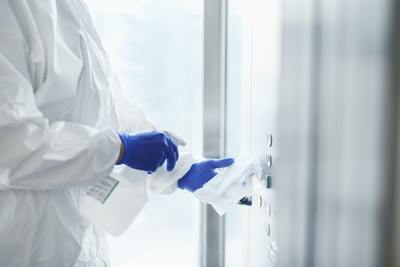
|
|
Hard surface biocontrol in hospitals using microbial-based cleaning products (2014)
28.02.2023 20:37
 Hard Surface Biocontrol in Hospitals Using Microbial Based Cleaning Products Alberta Vandini1, Robin Temmerman2,3, Alessia Frabetti1, Elisabetta Caselli4, Paola Antonioli5, Pier Giorgio Balboni4, Daniela Platano6, Alessio Branchini7, Sante Mazzacane1 *, Italy, 2014, PLoS One = Биоконтроль с твердой поверхностью в больницах с использованием чистящих средств на основе микробов. Вандини А., Теммерман Р., Фрабетти А., Казелли Е., Антониоли П., Балбони П. Г., Платано Д., Бранчини А., Маццакане, 2014 сент, eCollection 2014.
PLoS One . 2014 Sep 26;9(9):e108598. doi: 10.1371/journal.pone.0108598. eCollection 2014. Hard surface biocontrol in hospitals using microbial-based cleaning products Alberta Vandini 1, Robin Temmerman 2, Alessia Frabetti 1, Elisabetta Caselli 3, Paola Antonioli 4, Pier Giorgio Balboni 3, Daniela Platano 5, Alessio Branchini 6, Sante Mazzacane 1 Affiliations expand
Free PMC article Abstract Background: Healthcare-Associated Infections (HAIs) are one of the most frequent complications occurring in healthcare facilities. Contaminated environmental surfaces provide an important potential source for transmission of many healthcare-associated pathogens, thus indicating the need for new and sustainable strategies. Aim: This study aims to evaluate the effect of a novel cleaning procedure based on the mechanism of biocontrol, on the presence and survival of several microorganisms responsible for HAIs (i.e. coliforms, Staphyloccus aureus, Clostridium difficile, and Candida albicans) on hard surfaces in a hospital setting. Methods: The effect of microbial cleaning, containing spores of food grade Bacillus subtilis, Bacillus pumilus and Bacillus megaterium, in comparison with conventional cleaning protocols, was evaluated for 24 weeks in three independent hospitals (one in Belgium and two in Italy) and approximately 20000 microbial surface samples were collected. Results: Microbial cleaning, as part of the daily cleaning protocol, resulted in a reduction of HAI-related pathogens by 50 to 89%. This effect was achieved after 3-4 weeks and the reduction in the pathogen load was stable over time. Moreover, by using microbial or conventional cleaning alternatively, we found that this effect was directly related to the new procedure, as indicated by the raise in CFU/m2 when microbial cleaning was replaced by the conventional procedure. Although many questions remain regarding the actual mechanisms involved, this study demonstrates that microbial cleaning is a more effective and sustainable alternative to chemical cleaning and non-specific disinfection in healthcare facilities. Conclusions: This study indicates microbial cleaning as an effective strategy in continuously lowering the number of HAI-related microorganisms on surfaces. The first indications on the actual level of HAIs in the trial hospitals monitored on a continuous basis are very promising, and may pave the way for a novel and cost-effective strategy to counteract or (bio)control healthcare-associated pathogens. Conflict of interest statement Competing Interests: The authors declare that they received funding from the Copma scrl commercial company, and that Dr. Robin Temmerman is affiliated to a commercial funder of this study (Chrisal, Lommel, Belgium). This does not alter the authors' adherence to PLOS ONE policies on sharing data and materials. Figures Figure 1. Effect of microbial cleaning on…
Figure 2. Effect of microbial cleaning on…
Figure 3. Effect of microbial cleaning on…
Figure 4. Effect of microbial cleaning on…
Figure 5. Time course of coliforms and…
Figure 6. Antimicrobial resistance genes profile by… Similar articles See all similar articles
Источник <https://pubmed.ncbi.nlm.nih.gov/25259528/>
|
| Технология «Сайт-Менеджер » |

